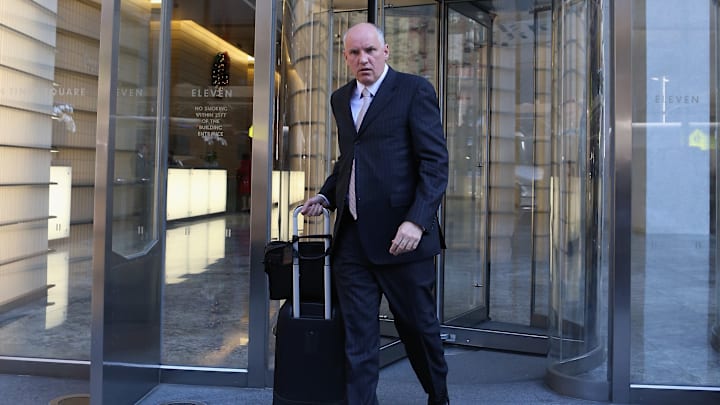GM Doug Armstrong runs one of the most successful front offices in the NHL.
His tenure as general manager has been one of winning and high expectations. Given his age (59), it’s possible that Armstrong will finish his NHL career as one of the most successful GMs in NHL history.
Armstrong has earned the right to avoid major criticism, as his managerial plans have tended to work out well.
However, two main issues need attention when looking at the St. Louis Blues roster and contracts.
Too many St. Louis Blues players have No Trade Clauses within their contracts
The St. Louis Blues appear to be stagnant in their current state. We’re not expecting much change to happen during this offseason.
First, only a few members of the 2023-24 roster will become UFAs (free agents).
However, more importantly, several players are playing at a mediocre level with protection via trade clauses and contingencies.
The movement to incorporate no-trade clauses has grown increasingly popular in most professional sports, but the decision to offer such contracts can negatively affect a team’s future, as in the St. Louis Blues case.
For example, Torey Krug blocked a trade this past season because of his contingency.
Justin Faulk, too, had similar protection implemented in his deal.
Fan favorite Colton Parayko has a complete no-trade clause. And then there is goal leader Jordan Kyrou, who will have a no-trade clause in his existing contract before the 2025 season hits.
It seems that all significant contracts have some form of contingency protection.
This is impossible to work with to build a better existing team. Players will underperform, and a change of scenery is often needed.
Armstrong must proceed very carefully in the future and stop openly handing out such contingencies as he has in the past.
Yet there is also a second primary obstacle within the current roster.
Too many mediocre players are receiving large contracts
The significant contracts of any team often contain the star power.
Robert Thomas and Jordan Kyrou have similar, lengthy, and hefty contracts, amounting to about $8.125 million per year.
Brayden Schenn is locked in for several more years at $6.5 million. Justin Faulk and Torey Krug, whose contracts expire after the 2026-27 season, are also signed and have similar salary figures as Schenn.
All three players are in their 30s and bring veteran experience. However, none have been All-Star caliber players lately, and most have seen deflating statistics.
Most of these players certainly have a place on the team, but paying Schenn, Krug, Faulk, and Parayko north of $6 million a year has strapped Armstrong with his contractual offers and ability to pursue noteworthy players in free agency.
As the paper shows today, the conclusion of the 2026-27 season will be monumental for the St. Louis Blues. Armstrong will lose several significant contracts with Krug and Faulk.
If the Blues want to bring in skilled free agents, they must eliminate several of these contracts.
For now, it’s a waiting game. Can Armstrong pull off a surprise trade?
Will a player demand a trade?
Armstrong has been clever in the past, and we should expect nothing different now. Perhaps we are all wrong, and his philosophy is playing out just as he intended. However, contract-wise, the Blue are in a tough spot.
We can only hope for prospects to enter the roster soon and accompany the existing talent already present.
